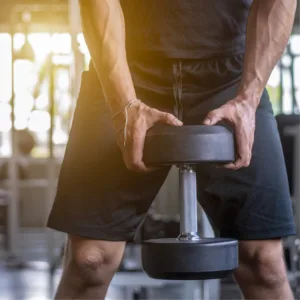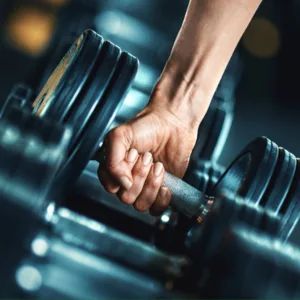A Strong grip is essential for any bodybuilder. It allows you to lift heavier weights, perform more exercises effectively, and prevent injuries. There are many different grip variations that you can use to target different muscle groups and improve your overall grip strength.
The grip you use has a significant impact on your workout. Use the right one to get the best results from your training.
If you want to get the most from your workouts, you need to mix things up from time to time. After all, your progress will quickly plateau if you don’t include plenty of variation in your workouts. Studies reveal that changing exercises regularly, as well as using different sets and rep schemes, will help keep your muscles growing and getting stronger (1).
Another aspect of your workout that you can change is your grip. A lot of people just “grip and go” with no real thought of how their hands affect the exercise they are doing. In reality, the way you hold your barbell, dumbbells, or machine handles can have a big influence on the exercise you are performing.
Use the following grips to add variety to your training, without changing any other aspect of your workout.
Best Grip Variations:
Also known as the pronated grip, this hand position is the most common and one that most lifters are very familiar with. All four fingers are wrapped around the bar, and the thumb usually rests on or next to your fingertips. With this grip, you should do your best to keep your wrists straight.
This grip involves rotating your wrists, so your palms are facing upward. Also known as the supinated grip, this grip is used for most biceps curls variations and works very well for barbell rows and chin-ups too. The palms-up position puts your biceps in a stronger position than the pronated grip. That’s why a lot of lifters can do more underhand chin-ups than they can overhand pull-ups.
The double underhand grip can also be used for bench presses. As well as being a great chest exercise variation, reverse grip bench presses are also easier on your shoulders than regular bench presses.
The mixed grip involves one pronated hand and one supinated hand. The main advantage of this grip is that it stops the barbell from rolling out of your fingers. Powerlifters use this grip to help them lift the heaviest weights possible without using wrist straps. Wrist straps are not allowed in powerlifting meets, although they are legal in strongman competitions. You can also use a mixed grip for pull-ups and lat pulldowns.
While this grip does allow you to lift more weight, it is not without risks. During deadlifts especially, the biceps on the supinated side is stretched and more prone to injury. Also, the mixed grip encourages a lop-sided posture that could lead to unbalanced muscular development.
If you do use the mixed grip, save it for your heaviest weights, and also try to swap hands set by set to avoid developing imbalances.
Also known as a neutral grip, this hand position keeps your hands turned inward toward one another. For exercises like pull-ups, pulldowns, and cable rows, using this grip involves using a special handle. You can also use a parallel grip for dumbbell benches and overhead presses. Biceps curls done with a parallel grip are called hammer curls. That’s because the arm action looks a little like hitting a nail with a hammer.

 The parallel grip is easy on both your shoulders and your wrists. In dumbbell chest presses, this grip allows you to keep your hands closer together. This closely replicates close grip bench presses, an exercise that emphasizes your triceps.
The parallel grip is easy on both your shoulders and your wrists. In dumbbell chest presses, this grip allows you to keep your hands closer together. This closely replicates close grip bench presses, an exercise that emphasizes your triceps.
A specialist barbell called a football bar has parallel handles so you can use this grip for bench presses and rows.
This gripping variation is commonly used by Olympic weightlifters. Weightlifters are not allowed to use lifting straps during competition. To increase grip strength, they use the hook grip. With this method, you hold the bar as usual but then tuck your thumb under your first fingers. This increases friction, which helps prevent the bar from slipping out of your hands.
While the hook grip is an excellent way to strengthen your grip, it can also be painful and takes a lot of getting used to. Weightlifters often tape their thumbs to make this grip more tolerable. Other than the snatch and clean, the hook grip is also used during deadlifts by exercisers who want a stronger hand position but don’t want to use a mixed grip or lifting straps.
Of all the grips people use in the gym, the pistol grip is the one you are least likely to see. Why? Because it actually reduces the amount of weight you can lift. It’s hard to think of many situations where this would be advantageous, but it can actually be very useful.
A lot of lifters complain that they cannot feel their lats working during pulldowns and rows. This is because they use too much weight, too much momentum, and do their reps too quickly. They might also have a weak mind-muscle connection.
When you use the pistol grip, you are forced to use less weight and do your reps much more slowly than usual. If you don’t, the bar will probably slip from your grasp. This helps keep the tension on your lats, and you should start to feel them working more. This reinforces the mind-muscle connection, which studies tell us is crucial for muscle growth and strength.
You don’t have to use the pistol grip for every set of your workout. Instead, just use it during your warm-up sets to help awaken your muscle-mind connection. Adopt to your regular grip after that, and you should feel your lats working much more.
The false grip involves holding the bar or handle with your fingers, but without wrapping your thumb around it. Also known as the thumbless grip and the suicide grip, the false grip allows you to rotate your elbows and shoulders into a comfortable, biomechanically advantageous position. This can help take the stress off your joints. When you hold the bar normally, your hands are much more “locked in,” which could lead to sore wrists, elbows, and shoulders.
The false grip can be used in all pressing exercises but should be used with caution during bench presses. That’s because the bar could slip out of your hand. That doesn’t mean you can’t use the thumbless grip for bench presses. Just make sure the bar is resting toward the heel of your hand, so it is less likely to roll.
Tips for Improving Your Grip Strength
In addition to using different grip variations, there are a few other things you can do to improve your grip strength:
- Use grip trainers: Grip trainers are small devices that you can squeeze to strengthen your hands and forearms.
- Hang from a pull-up bar: Hanging from a pull-up bar is a great way to grip strength and also work your forearms and biceps.
- Do rock climbing: Rock climbing is a great activity for building overall grip strength and endurance.
Wrapping Up
A strong grip is essential for any bodybuilder. “By using different grip variations and following the tips in this article, you can improve your grip strength and take your bodybuilding workouts to the next level”.
Don’t just grab onto your barbell without thinking about your grip. Choosing the right grip for your goals can have a big impact on the effect of your workout. Experiment with different grips to see which one works best.
In some cases, the best grip will be the one that allows you to lift the most weight. In others, the best grip might be the one that enables you to really feel the target muscles working. Try them all and see which one is right for you.



 The parallel grip is easy on both your shoulders and your wrists. In dumbbell chest presses, this grip allows you to keep your hands closer together. This closely replicates close grip bench presses, an exercise that emphasizes your triceps.
The parallel grip is easy on both your shoulders and your wrists. In dumbbell chest presses, this grip allows you to keep your hands closer together. This closely replicates close grip bench presses, an exercise that emphasizes your triceps.






